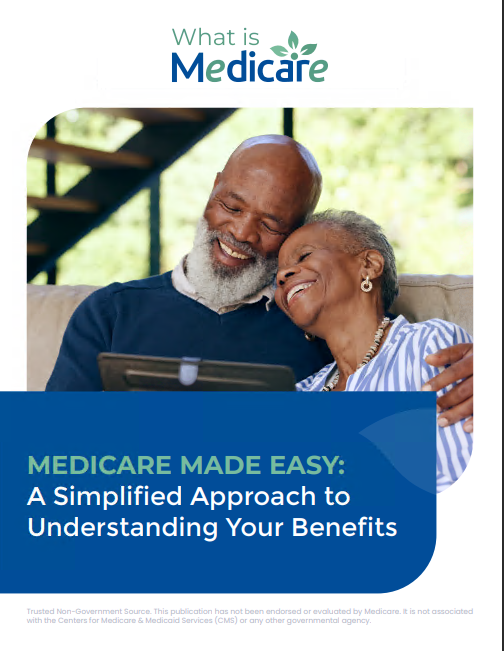Key Takeaways
- Understanding the different parts of Medicare—Part A, Part B, Part C, and Part D—can help you make informed decisions about your healthcare coverage.
- Now is the perfect time to evaluate your Medicare options, especially since annual enrollment periods or changes in your healthcare needs can impact your coverage.
Medicare can seem overwhelming at first, but it really comes down to understanding how its different parts work together. Medicare is divided into four major parts: Part A, Part B, Part C, and Part D. Each of these parts plays a distinct role in ensuring you have the coverage you need for your healthcare. Let’s break down these parts and see what they offer.
Part A: Hospital Insurance
Part A is often referred to as hospital insurance. It helps cover inpatient hospital stays, skilled nursing facility care, hospice care, and some home health services. Many people don’t have to pay a premium for Part A if they or their spouse paid Medicare taxes while working. Part A covers hospital stays after you meet the deductible, but remember there’s a limit to how long Medicare will pay for care in a hospital or skilled nursing facility.
What is covered by Part A?
- Inpatient care at hospitals.
- Skilled nursing facility care (under specific conditions).
- Hospice care for terminally ill patients.
- Limited home healthcare services.
While Part A can take care of significant portions of hospital-related expenses, you’ll still have out-of-pocket costs like deductibles and coinsurance, so it’s important to understand what you may be responsible for.
Part B: Medical Insurance
Part B covers outpatient medical care. This includes doctor visits, preventive services, medical equipment, and lab tests. Most people pay a monthly premium for Part B, and it covers about 80% of approved services, leaving you responsible for the remaining 20%. This part is essential for covering your everyday health needs that don’t require hospitalization, like routine checkups and doctor visits.
What is covered by Part B?
- Doctor’s visits.
- Outpatient care.
- Preventive services (like vaccines and screenings).
- Durable medical equipment (such as wheelchairs).
Having Part B helps ensure that your regular doctor visits, diagnostic tests, and preventive care are covered. It’s important to note that while Part B covers medically necessary services, it doesn’t cover everything. Services like dental, vision, and hearing aren’t covered, which might lead you to consider additional coverage.
Part C: Medicare Advantage Plans
Medicare Part C, also known as Medicare Advantage, is an alternative way to receive your Medicare benefits. These plans are offered by private insurance companies approved by Medicare. They bundle Part A, Part B, and usually Part D (prescription drug coverage) into one plan. Medicare Advantage plans may also offer additional benefits like dental, vision, or hearing services that Original Medicare doesn’t cover.
What should you know about Part C?
- Combines coverage for hospital, medical, and sometimes prescription drugs.
- Includes extra benefits like dental, vision, and wellness programs.
- Is managed by private insurance companies but follows Medicare’s rules.
Medicare Advantage plans come with different rules, costs, and provider networks. It’s essential to review your options carefully, as some plans may require you to use a network of doctors and hospitals. If you’re considering switching to a Medicare Advantage plan, the annual enrollment period (AEP) is a critical time to do so.
Part D: Prescription Drug Coverage
Prescription drugs are an important part of many healthcare plans, which is where Medicare Part D comes into play. Part D helps cover the cost of prescription medications. This part is provided by private insurance companies approved by Medicare, and you’ll need to pay a premium for this coverage. However, the cost of medications under Part D can vary depending on the plan you choose and the medications you need.
What is covered by Part D?
- Prescription drugs, both generic and brand-name.
- Different tiers of medications, where higher-cost drugs may require higher co-pays.
Having a Part D plan is important for managing ongoing medication needs. Be aware that there’s a late enrollment penalty if you don’t sign up for Part D when you’re first eligible and don’t have other creditable prescription drug coverage.
Why Understanding Medicare Now is Important
As we age, our healthcare needs change, and so do the rules and coverage options of Medicare. Whether you’re newly eligible for Medicare or already enrolled, it’s crucial to understand how these parts work together and evaluate your coverage regularly.
Medicare’s Annual Enrollment Period (AEP) happens every year from October 15 to December 7. During this time, you can make changes to your Medicare coverage, switch plans, or enroll in a new plan. This makes it the perfect time to re-evaluate your healthcare needs and make sure your plan is still the right fit.
Beyond that, your healthcare needs can shift over time. You might find that a plan that worked for you a year ago no longer covers all your needs, or perhaps your prescriptions have changed, and now Part D costs have risen. Staying informed about the different parts of Medicare means you can make changes when necessary to get the most out of your coverage.
How to Avoid Late Enrollment Penalties
One of the common pitfalls of Medicare is the potential for late enrollment penalties, which can add up over time. If you don’t enroll in Medicare Part B or Part D when you’re first eligible, you could face higher premiums later. For example, if you don’t sign up for Part B when you’re first eligible at 65, your monthly premium may go up by 10% for each 12-month period you could have had Part B but didn’t. This penalty could last for as long as you have Part B, so it’s crucial to enroll on time unless you qualify for a Special Enrollment Period (SEP).
Special Enrollment Periods allow you to delay enrollment in Part B or Part D without penalty if you have health coverage through an employer or union when you turn 65. Once this coverage ends, you’ll have a specific window to enroll in Medicare without penalty.
When Should You Review Your Coverage?
While the Annual Enrollment Period is the prime time for making changes, there are other key moments when reviewing your Medicare coverage is crucial:
- When you turn 65 – It’s time to sign up for Medicare.
- If your healthcare needs change – If you need more frequent care, more extensive medications, or new medical treatments.
- When your financial situation changes – Medicare premiums and other costs may influence your decisions.
- When moving to a new location – Some Medicare Advantage plans have networks, and moving out of the network can require a change in plans.
Regularly reviewing your Medicare coverage ensures you don’t miss out on the care you need or end up paying more than necessary.
Taking Charge of Your Medicare Choices
Medicare is complex, but understanding the ABCs of your coverage is crucial to making the most of it. Each part has its strengths and weaknesses, and knowing how they fit together can help you better plan for your healthcare needs. Whether you’re looking to stick with Original Medicare (Part A and Part B) or explore additional options with Part C or Part D, staying informed ensures you get the coverage that fits your life and health.
The more you understand Medicare, the better equipped you’ll be to make decisions about your healthcare coverage and avoid unexpected costs. Take the time to review your Medicare options now, and make changes if needed, to ensure your healthcare coverage is aligned with your needs today and in the future.
Navigating Your Medicare Coverage: Make an Informed Choice
Medicare is more than just a government program—it’s a tool that can help secure your healthcare as you age. Whether you’re just becoming eligible or have been enrolled for years, the more you understand each part, the more confidently you can manage your health.








